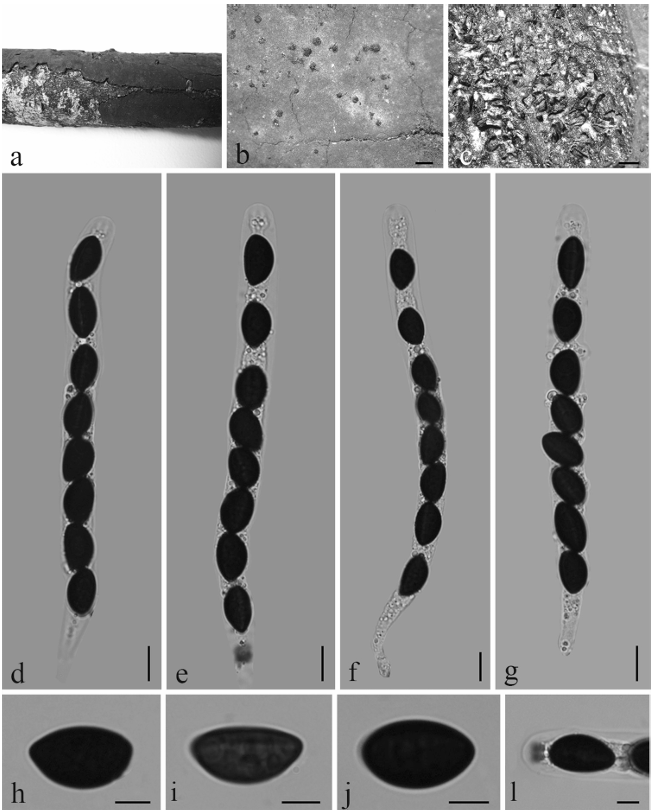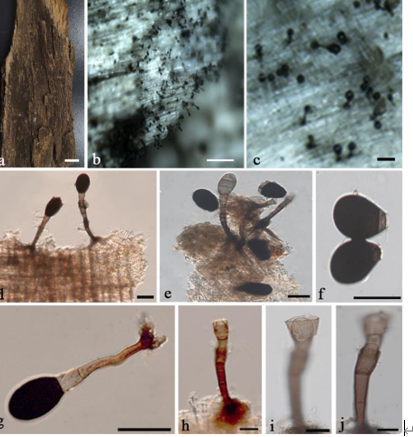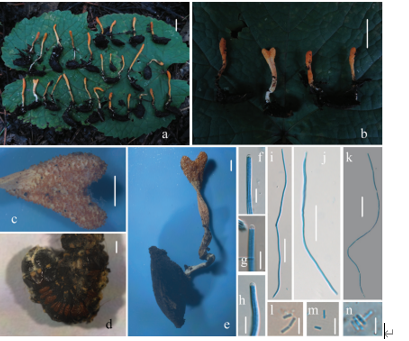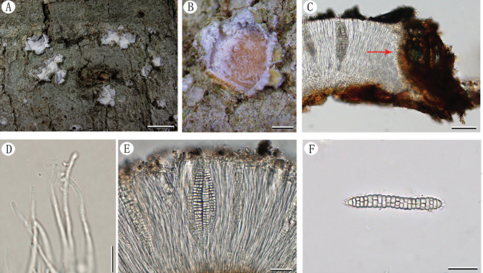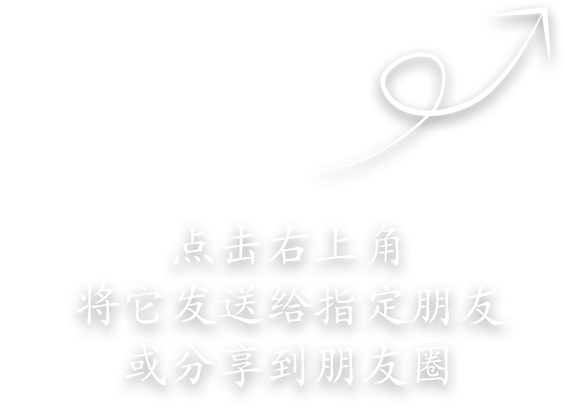Mycorrhaphium subadustum T. Cao & H.S. Yuan, sp. nov.2021
MycoBank: 838509
Holotype:China. Liaoning Province, Huanren County, Laotudingzi Nature Re serve, on fallen branch of angiosperm, 4.VIII.2018, Yuan 12976 (holotype IFP 019374).
Description
Sexual morph:Basidiocarps annual, stipitate, solitary or imbricate, corky to soft f ibrous, without odor and taste when fresh, light in weight when dry. Pilei semicircular to dimidiate, 2.5–4.5 cm wide and 0.3 cm thick. Pileal surface velutinate, smooth, concentrically zonate, yellowish white to greyish orange; margin acute, yel lowish white. Hymenophore hydnoid; spines crowded, evenly distributed, grey ish orange, fibrous, subulate to terete, straight to somewhat flexuous, solitary or confluent, up to 1 mm long, 5–7 per mm; sterile margin smooth, yellowish grey, up to 2 mm wide. Context yellowish white, leathery, azonate, homogeneous, up to 0.5 mm thick. Stipe up to 3 cm long, 1 cm wide, straight and base inflated, surface tomentum eventually glabrous, brownish orange. Basidiospores cylindrical to ellipsoid, colorless, thin-walled, smooth, CB–, IKI–, (3.5–)3.8–4.0(4.2) × (1.5–)1.8–1.9(–2.0) μm, Lm = 3.89 μm, Wm = 1.83 μm, Q = 2.13–2.17 (n = 60/2).
Asexual morph: Undetermined
Hyphal structure:Hyphal system monomitic in context, dimitic in spine trama; generative hyphae often with clamp connections and simple septate occasionally pre sent; skeletal hyphae thick-walled to subsolid, CB+, IKI–; tissues pale yellow in KOH.
Culture: Undetermined
Habitat: Undetermined
Distribution:In temperate zones.
GenBank accessions: ITS KC485537 nrLSU KC485554 ITS MW491378 nrLSU MW488040 tef1 MW495253
Notes:Undetermined
Referenc: [1] Cao, T. , Yu, J. R. , Nguyn, T. T. T. , & Yuan, H. S. . (2021). Multiple-marker phylogeny and morphological evidence reveal two new species in steccherinaceae (polyporales, basidiomycota) from asia. MycoKeys, 78, 169-186.
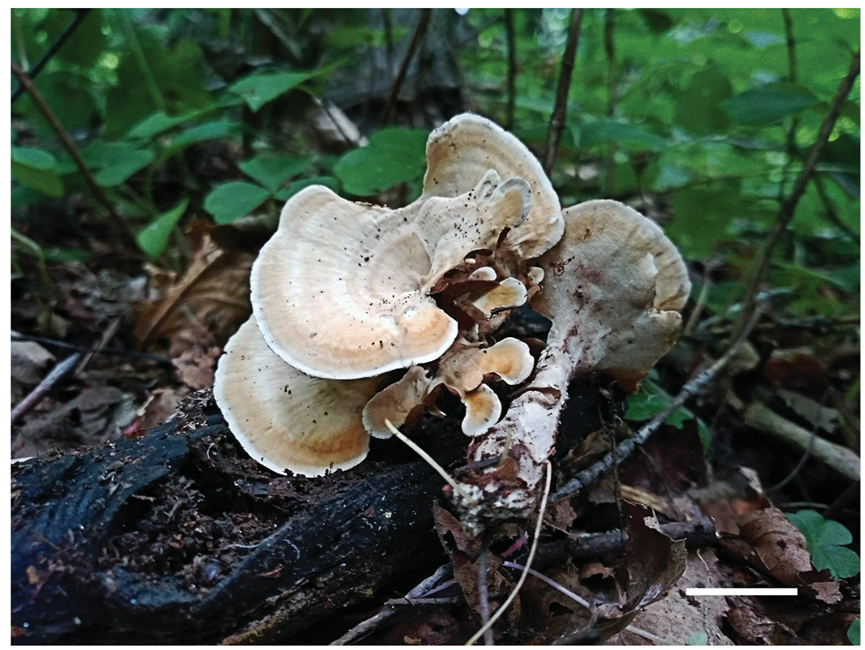
Basidiocarps of Mycorrhaphium subadustum (IFP 019374, holotype). Scale bar: 10 mm.
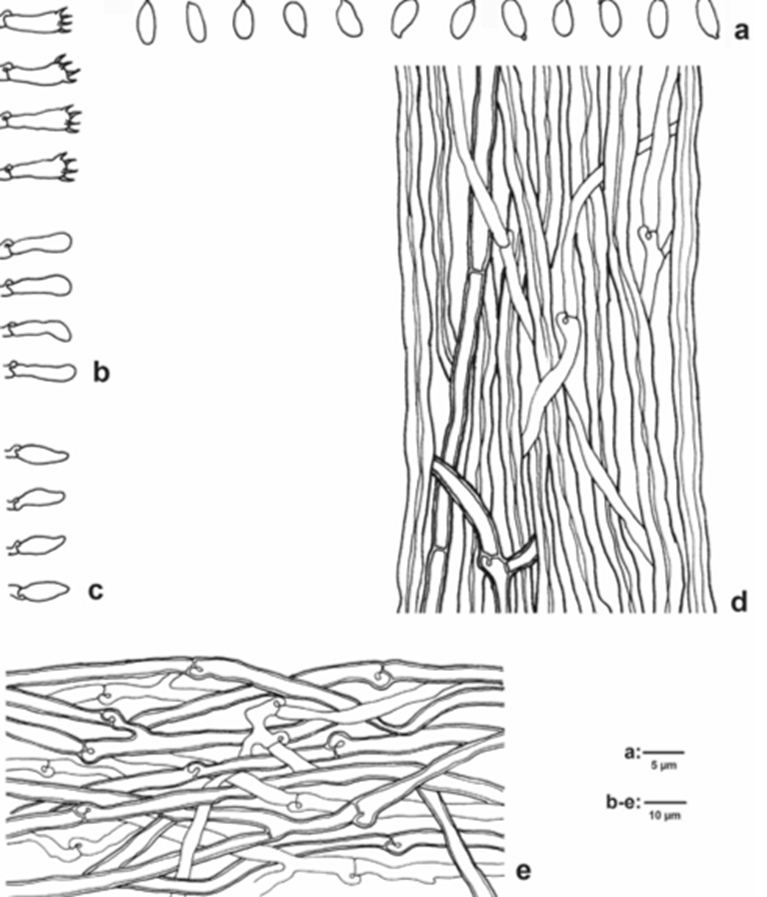
a Basidiospores b Basidia and basidioles c cystidioles d Hyphae from spine trama e Hyphae from context.


